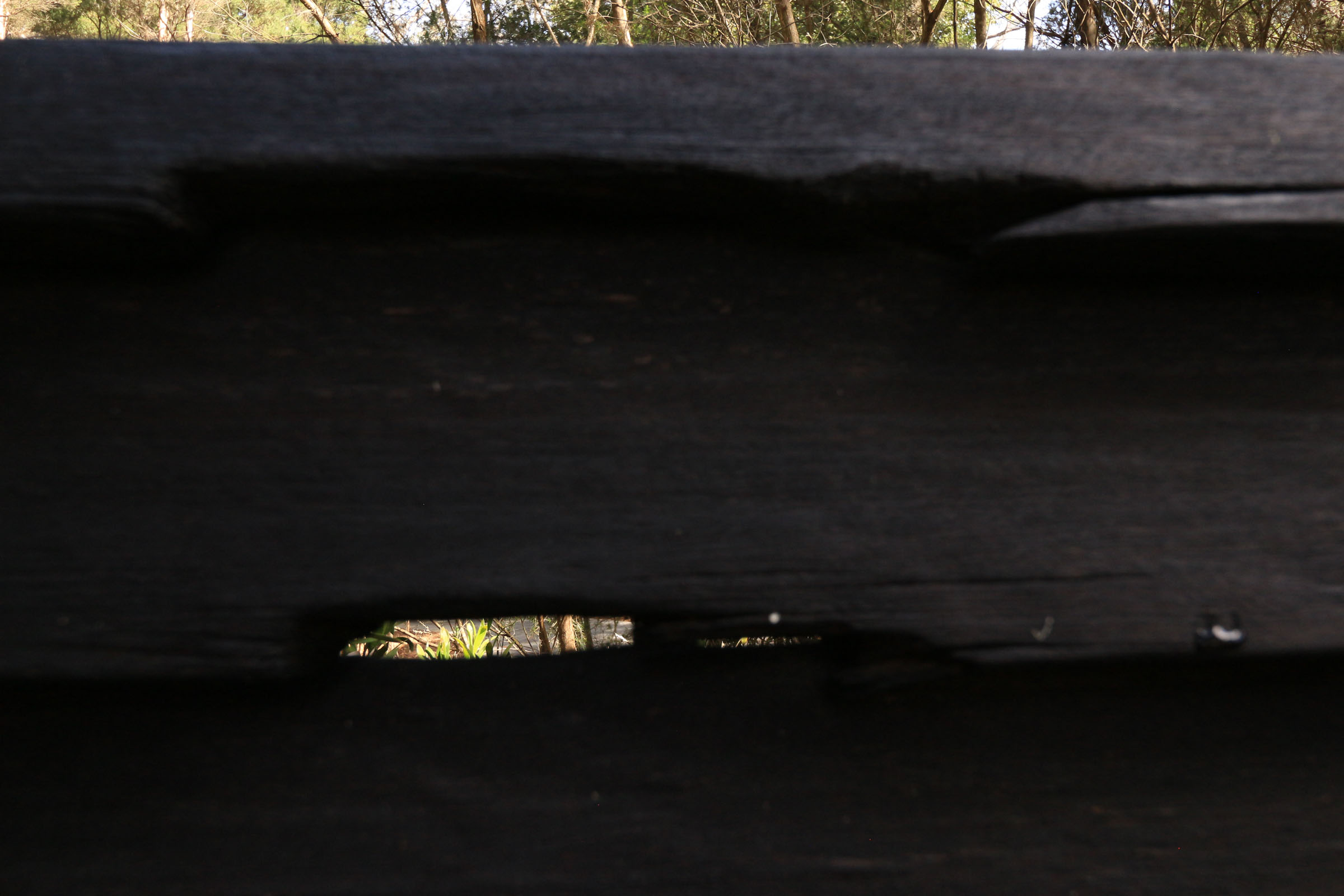Paperbark treehouse
Initiated and primarily funded by the Friends of the Gardens, this Treehouse was created to allow visitors of all ages to experience special aspects of the copse of Melaleuca trees below this walking track.
Fire was an important generator for the design of the Paperbark Treehouse, just as it is a source or regeneration in the Australian landscape. The myriad thin layers of bark visible on these trees not only protect the living tree trunks against the ravages of bushfires, but also harbour epicormic buds that sprout after the trunks have been scorched.
The Treehouse’s tree trunks and timbers have been charred, providing a natural weather shield and giving extra protection against fire by resisting ignition. The deep black of the carbonised structure creates a backdrop to highlight the surrounding Tea Tree grove.
Three levels in the Treehouse relate to the trees themselves as roots (understorey), trunk (main platform) and canopy (crow’s nest). The crow’s nest is a ship of the air to float through the trees.
Most of the Treehouse’s building materials came from recycled sources. The natural tree trunks were salvaged within the Gardens themselves, and the turpentine joists and decking were milled from old wharf piers. The Australian rosewood handrail and ladder rungs are from century-old Central Queensland fence posts, acquired from the film set of Baz Luhrmann’s “Australia”.
The cladding weatherboards were cut longitudinally from Victorian Silvertop ash logs as radially-sawn wedges, a highly-sustainable type of milling. Their shapes reference the paperbark trees’ natural edged layers.
Chilean sculptor Carolina Pinto created the organic steelwork that grows on and around the trunks of the tree columns and will facilitate native vines to grow slowly through the structure and anchor it to the forest floor

















